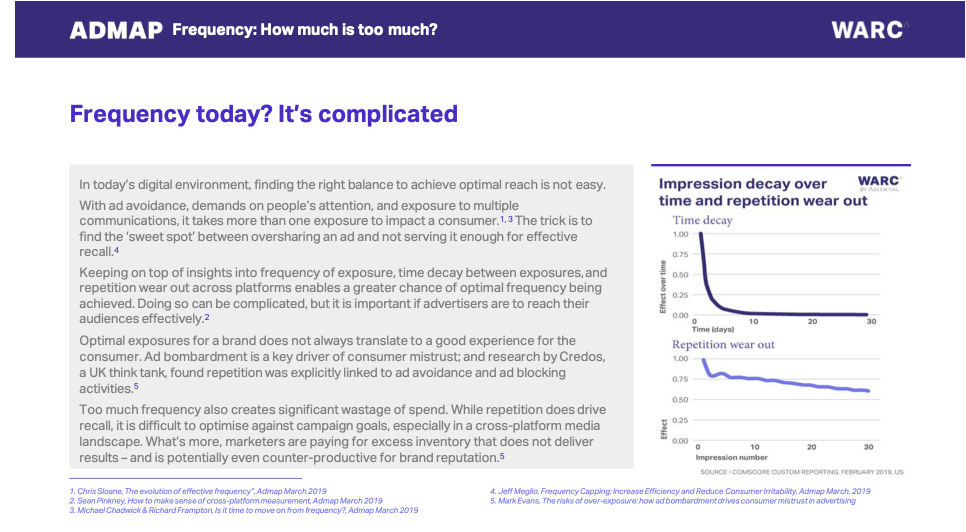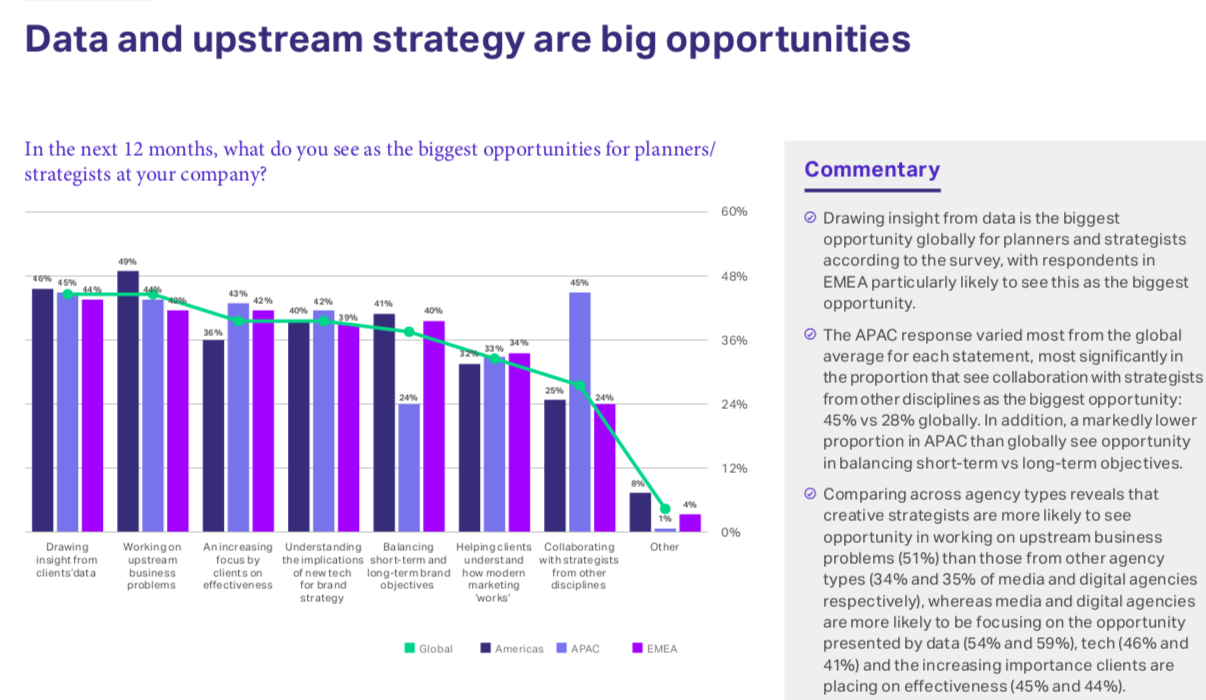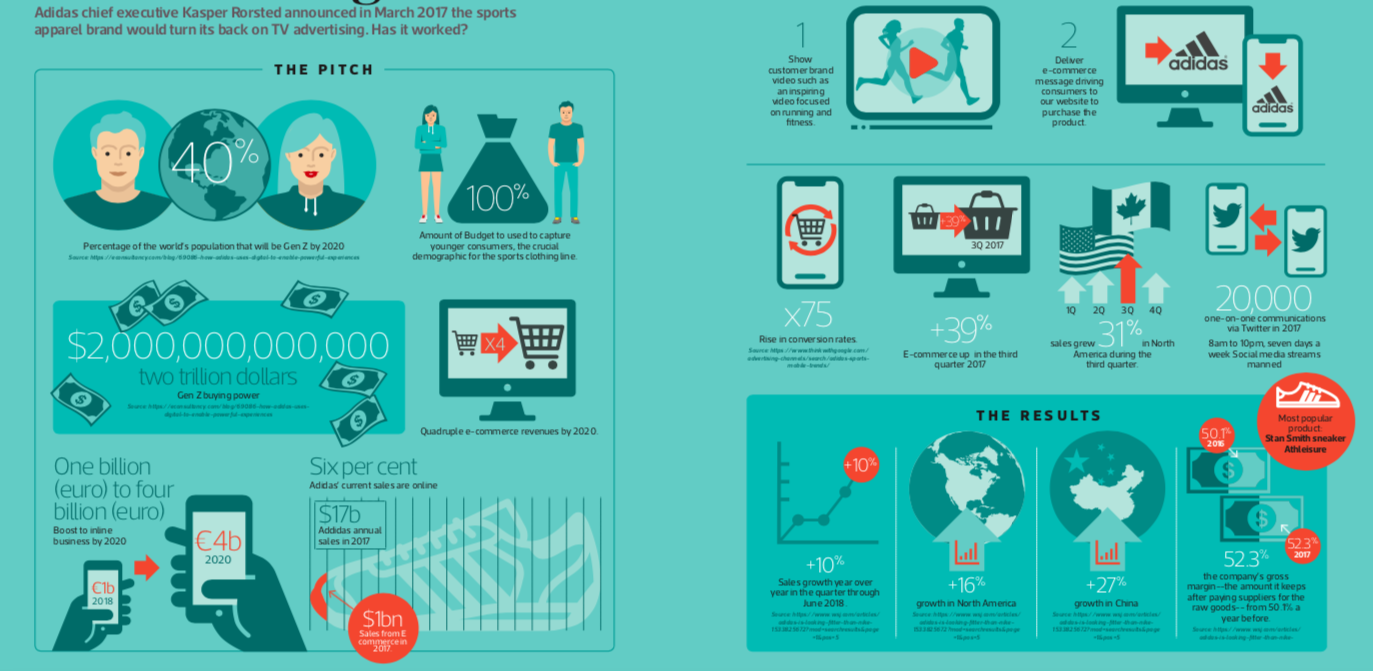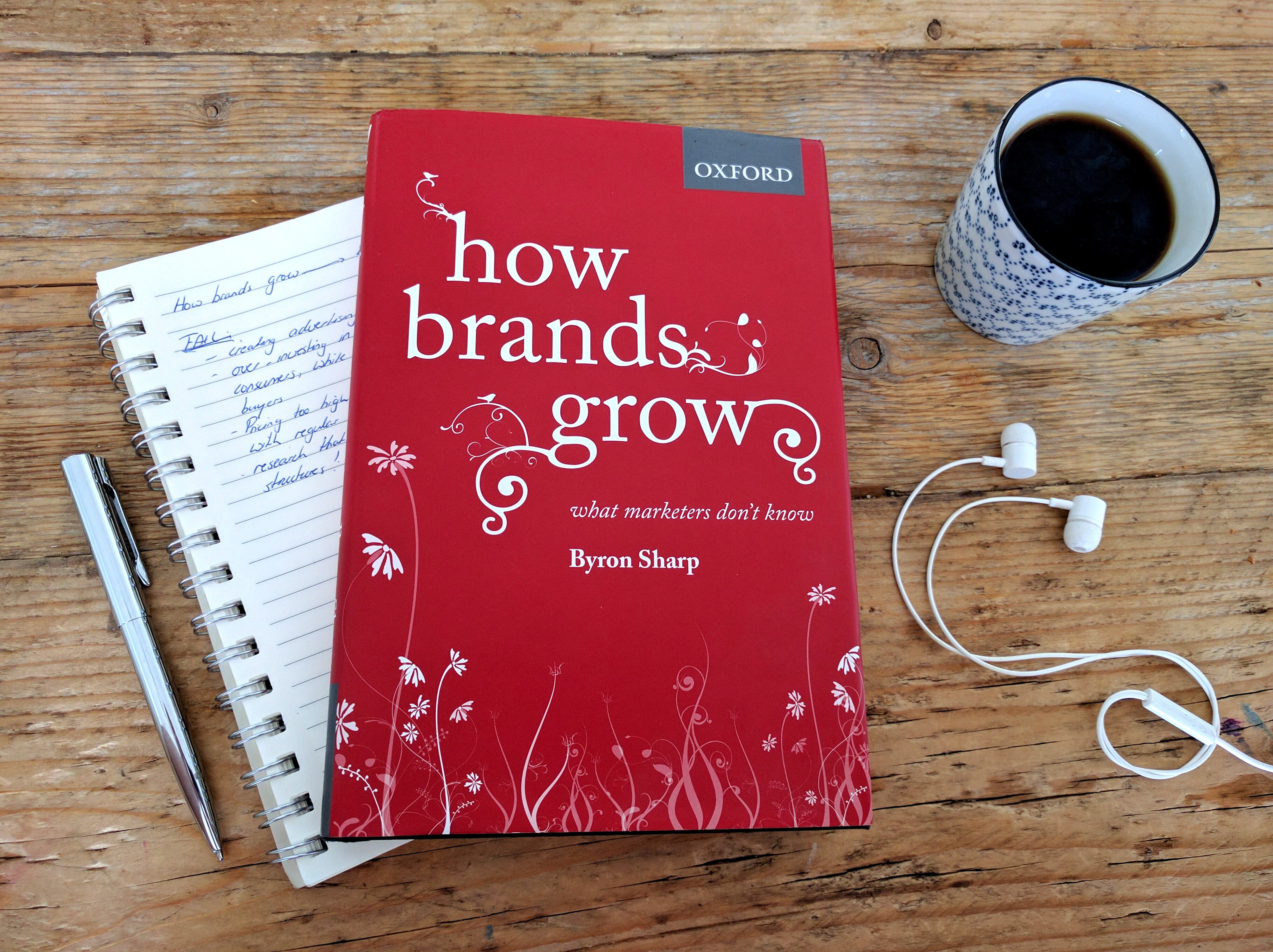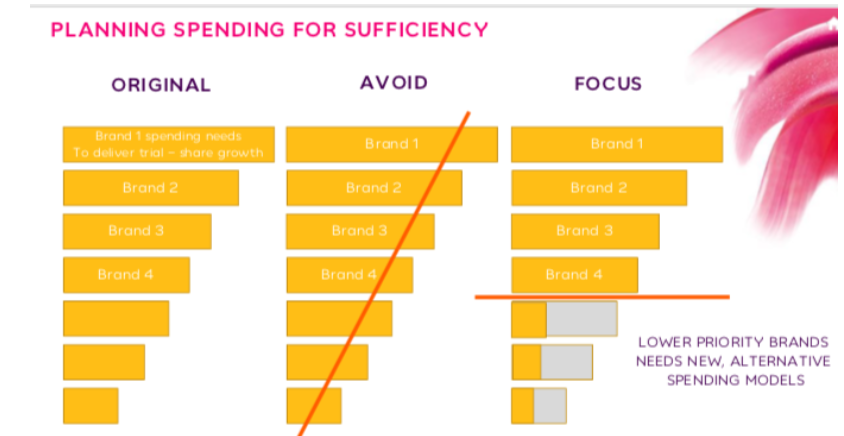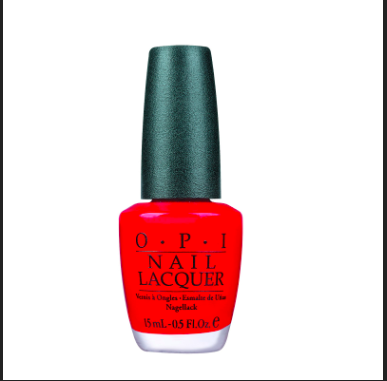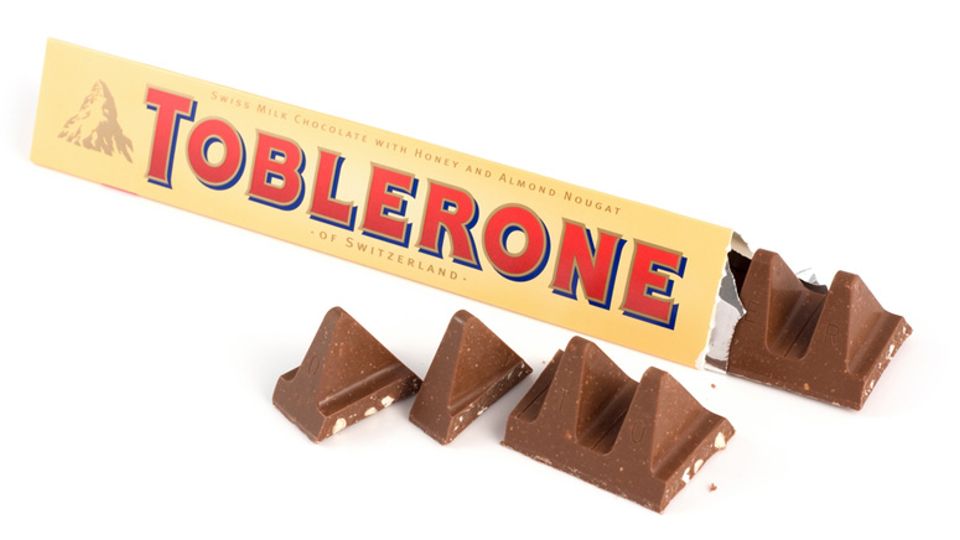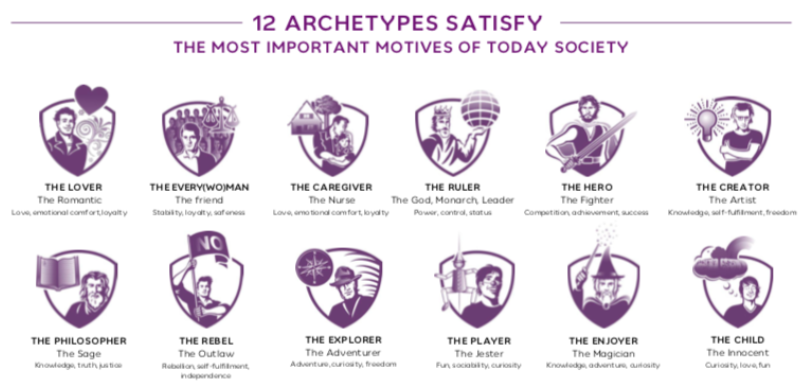Exercise: tweak the headline 3
Exercise: write a new headline 2
Write a headline for this infographic
How to grow your brand: ten scientifically proven rules for growth
1. Drive new users (penetration)
2. Build mental availability (salience and cut through)
3. Build physical availability (make it easy for people to buy)
4. Reinforce and refresh your distinctive assets
5. Focus on consistently delivering your brand “personalities” at all consumer touch points
6. Drive trial
7. Use wide-reaching, broadcast media
8. Focus on a long presence in media
9. Back a few big, long-term bets
10. Base before innovation
For more rules, see Byron Sharp’s How Brands Grow.
Related stories
How to grow your brand #7. The importance of “sufficiency”
How to grow your brand #6. Building mental availability through “always on” communication
How to grow your brand #5. How to build mental availability through branding
How to grow your brand #4. Portfolio availability
How to grow your brand #3: mental and physical availability
How to grow your brand #2. Distinctiveness matters, not difference
How to grow your brand #1. Customer loyalty does not exist
About the author

My name is Andy Pemberton. I am an expert in data visualization. I guide global clients such as Lombard Odier, the European Commission and Cisco on the best way to use data visualization and then produce it for them: reports, infographics and motion graphics. If you need your data visualized contact me at andy@furthr.co.uk or call 07963 020 103
Posted in: Uncategorized | Leave a CommentHow to grow your brand #7. The importance of “sufficiency”
Sufficiency is the level at which advertising spending actually starts to work.
No marketing organisation has the money to do everything it wants to do.
Airing below sufficiency is a waste of time and money. It will not be sufficient to win the war for mental availability.
The only strategy is to focus on core products.
Only once those brands have been given enough support should you spend ad dollars on other brands or products. A famous example of this was Steve Jobs’ decision to reduce the product range at Apple to five core products. It proved to be a highly effective strategy.
Related stories
Try this sniff test to see if your business stands out
Business intelligence tools give your business a competitive advantage
6 undeniable reasons why Power BI is a good skill to have for any marketer
Everything you need to know about advertising on one annotated slide
About the author

My name is Andy Pemberton. I am an expert in data visualization. I guide global clients such as Lombard Odier, the European Commission and Cisco on the best way to use data visualization and then produce it for them: reports, infographics and motion graphics. If you need your data visualized contact me at andy@furthr.co.uk or call 07963 020 103
Posted in: Uncategorized | Leave a CommentHow to grow your brand #6. Building mental availability through “always on” communication
Advertising must build mental availability. To start doing that, it must be noticed.
Getting noticed is not easy. Think about lipstick. Many lipstick brands are also shouting loudly to be heard. To win the war for mental availability, advertising must have an impact.
Of course, empty impact is no impact at all. So, we must aim for “branded impact.” That is an impact people can clearly link to the brand.
To establish branded impact, we need to harness the power of distinctiveness, memory structures and emotion.
Distinctiveness
“When the world zigs, zag.” According to ad creative guru John Hegarty, to cut through the noise, we must make distinctive work that stands out, otherwise, we risk buying the world’s most expensive wallpaper.
Marketers need to be brave but test safely in pre-market research.
Refresh and rebuild memory structures
Building memory structures via distinctive brand assets provides the clarity, consistency and cut-through we need to grow the user base, writes Byron Sharp in How To Grow Your Brand.
Consistency is vital. Once memory structures are established, marketers need to refresh them to keep them relevant and exciting.
Emotion
Neuroscience confirms that emotion is the primary way we make decisions before engaging our rational brain to rationalize a decision after we have made it.
Brands often deliver emotional states well beyond any functional purpose they provide. You don’t buy a fragrance; you buy confidence.
Using emotion in this way drives mental availability and will cut through the noise.
Building mental availability through media
If, as some have argued, a brand’s sales are like the height at which an aeroplane flies, ad spend is its engine.
While the engines are running, everything is fine. But when the engines stop, the descent begins.
Just as advertising works better when there is lots of physical availability, the reverse is also true. Advertising works less well when it is turned on and off.
The good news is that advertising can affect memory structures even if given little attention. Consumers may notice a brand on the shelf and feel slightly more optimistic about it, simply because they have seen its advertising -without realising this has happened.
To build mental availability through media – and keep the engines running – we need to do three things:
1) Shout louder
2) Shout wider
3) Shout longer
Shout wider: reach
The law of mental availability tells us we must try to reach as many people in the category as possible.
If coverage is king, broadcast media must dominate, and TV will be the most effective choice. (At least for now.)
Shout louder: share of voice
Empirical studies suggest a correlation between the share of voice and the share of the market. If brands wish to grow, they must invest to increase their share of voice, which in turn will increase their share of market.
Shout longer: continuity
Consumers buy products 24/7/365.
Brands cannot afford ever to be silent, if we wish to stay top of mind with our buyer. It is vital to reach all buyers of the category continuously.
This is especially important with impulse purchases such as nail polish.
Many brands are shifting from a burst to a drip media strategy across key consumption periods.
A consistent ad presence during a key consumption period is more important than an intense burst of activity over a shorter period.
Related stories
Try this sniff test to see if your business stands out
Business intelligence tools give your business a competitive advantage
6 undeniable reasons why Power BI is a good skill to have for any marketer
Everything you need to know about advertising on one annotated slide
About the author

My name is Andy Pemberton. I am an expert in data visualization. I guide global clients such as Lombard Odier, the European Commission and Cisco on the best way to use data visualization and then produce it for them: reports, infographics and motion graphics. If you need your data visualized contact me at andy@furthr.co.uk or call 07963 020 103
Posted in: Infographic of the day, Uncategorized | Leave a CommentHow to grow your brand #5. How to build mental availability through branding
In branding, clarity is everything.
Marketers must ensure products stand out to reach large audiences of light buyers cost-effectively.
To do this, marketers have various tools they can deploy.
Marks of distinction
Distinctiveness, or how we stand out from others has been shown in research to be effective at driving mental availability.
Distinctiveness helps lock a brand into memory. It creates a neural association, which makes it easier to recall. How many flat chocolate bars can you name? Several? None? Now how many triangular chocolate bars can you name? It’s much easier to recall something distinctive such as Toblerone, when it is distinct from the category. That distinction is worth money.
Distinction can come from the product, the pack, or the advertising.
Beauty products with a marks of distinction include the iconic tartan of Burberry, the duck egg blue and crystal bottle of Tiffany, the crown and London setting of Rimmel, and the Wave & Red colour of Wella.
A celebrity endorsement such as Kate Moss for Rimmel counts as a mark of brand distinction.
Distinctiveness is one of the most effective tools we have to cut through the noise of the competition and get inside our customer’s heads.
The reason is a matter of human survival: we ignore anything that resembles “business as usual” (it’s not a threat or a benefit), yet we are genetically hard-wired to notice things that break the norm.
By identifying the different assets of our brands, brands can assess them for fame and uniqueness. The leading brands can then be leveraged at all consumer touch points.
Personality
Many brands use personality to help define their brands and lodge them in the minds of customers.
Brand personalities lock into archaic story patterns buyers are already aware of. When fashion giant Coty associate one of its brands with an archetype such as Rimmel and The Rebel, it triggers deep, emotive associations between the brand and buyers.
The clearer and more distinct a brand’s personality, the easier it is for people to recall it.
Personality is increasingly a key point of distinction. That’s why Coty has an outside agency to help define the archetypes of our top 20 brands.
Purpose
Purpose is why the brand exists, how it intends to positively impact consumers’ lives and how it helps our consumers. The notion of a brand’s purpose has been popularized by “Start With Why”, a book and Ted Talk by Simon Senek.
Purpose brings the meaning of brands to our consumers. It also guides marketing decisions about what the brand offers, how the brand acts and communicates.
Purpose is a reflection of the core beliefs and values of the brand. It can also be informed by consumer, culture and category. Evidence suggests that companies with purpose driven-brands outperform the market average.
Related stories
7 benefits of data visualization storytelling
Recent inflation won’t drive up interest rates. The reason is “demographic stagnation”
House prices surge as demand for offices and gyms FALL OFF A CLIFF
About the author

My name is Andy Pemberton. I am an expert in data visualization. I guide global clients such as Lombard Odier, the European Commission and Cisco on the best way to use data visualization and then produce it for them: reports, infographics and motion graphics. If you need your data visualized contact me at andy@furthr.co.uk or call 07963 020 103
Posted in: Uncategorized | Leave a CommentHow to grow your brand. #4 Portfolio availability
We know that brands are “substitutable.” In other words, all category buyers can be consumers of competing brands as well as ours.
So we need to ensure our brands easily come to mind when people are considering buying from a particular category. If we don’t make it easy for them to believe us, they will happily switch brands.
At the same time, there are partitions in every category, which can be explained in terms of premium versus value.
Shoppers often shop around their chosen partition, says Byron Sharpe in How To Grow Your Brand
To increase penetration, we need to play in all partitions, and ensure we drive mental and physical availability in each partition.
One brand per partition
The best strategy is to have one brand per partition with the resources to exploit its potential fully. Too many competing voices will not help us win through the competitive noise.
We can call this strategy “base before innovation”. Core brands must be prioritized – double down on heroes in each partition – before supporting new brands.
In order to win in portfolio availability, we will:
- Keep focus on core brands/ core lines
- Match key price partitions
- Keep consistency of distinctive assets
- Support innovations consistently over time
About the author

My name is Andy Pemberton. I am an expert in data visualization. I guide global clients such as Lombard Odier, the European Commission and Cisco on the best way to use data visualization and then produce it for them: reports, infographics and motion graphics. If you need your data visualized contact me at andy@furthr.co.uk or call 07963 020 103
Posted in: Uncategorized | Leave a CommentHow to grow your brand #3: mental and physical availability
To make a brand easy to buy we need to build mental and physical availability. Everything else is secondary.
Building mental availability requires distinctiveness and clear branding. Building physical availability requires breadth and depth of distribution in space and in time. Together, mental and physical availability make a brand easier to buy for more people, in more situations.
In the long run, brands compete in terms of mental and physical availability. Mental and physical availability takes a long time to build and a long time to fade. This stability is worth real money.
Salience is the propensity for a brand to be noticed and thought of in buying situations. We create salience by building memory associations about a brand. The more extensive and fresher the network of memory associations, the greater the brand’s chance of being noticed or thought of in buying situations.
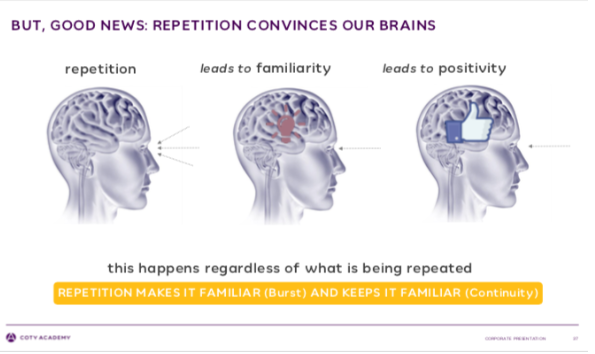
By building memory links in buyers, marketers can increase the number of people who think of a brand, the number of times each person thinks of a brand, the number of times a person thinks of a brand as an option to buy.
Why branding and advertising matter
The maintenance of brand salience depends on the quality of branding and advertising.
Distinctive, consistent icons and imagery build memory associations that allow a brand to be recalled in a variety of buying situations.
Physical availability means making a brand as easy to notice and buy as possible, for as many consumers as possible, across as wide a range of potential buying situations as possible. This includes hours of availability and ease of facilitated purchase.
The power of sampling
Often the very best way to drive physical availability is to try a product, or what we call sampling via beauty consultants or in store, or buy enticing customers with a glass of Proseco or nibble of a treat. Other factors include price, promotion, distribution and shelf space.
The laws of physical availability can be brutal in their simplicity: you can double sales by simply doubling distribution.
Posted in: Uncategorized | Leave a Comment